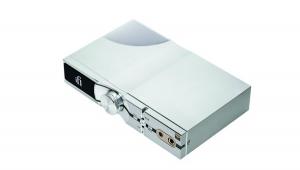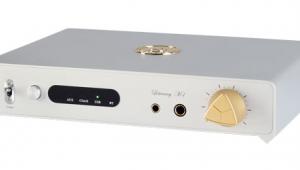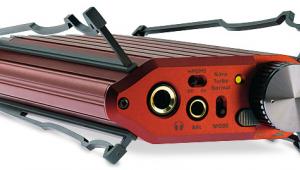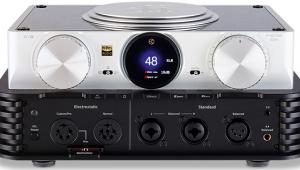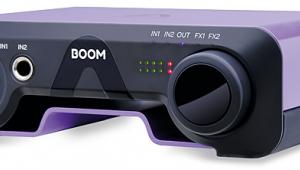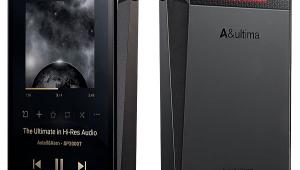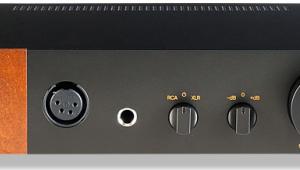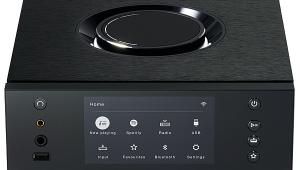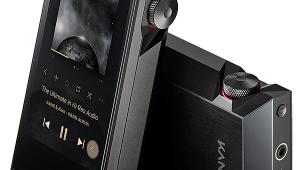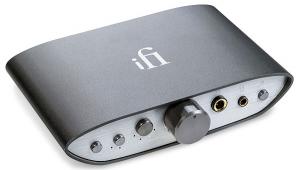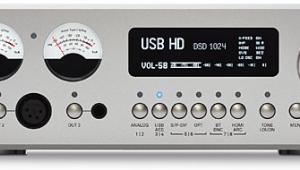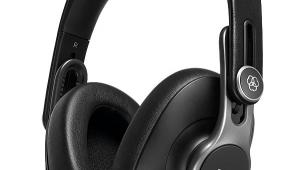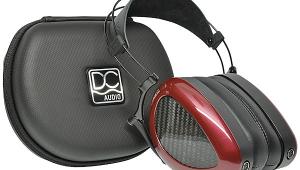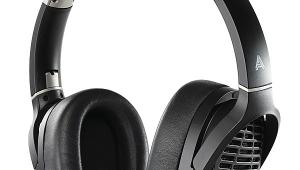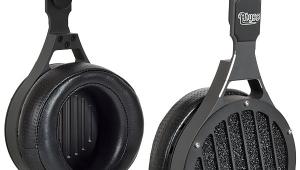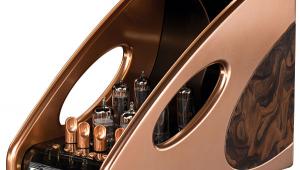Mysphere 3.2 Headphones
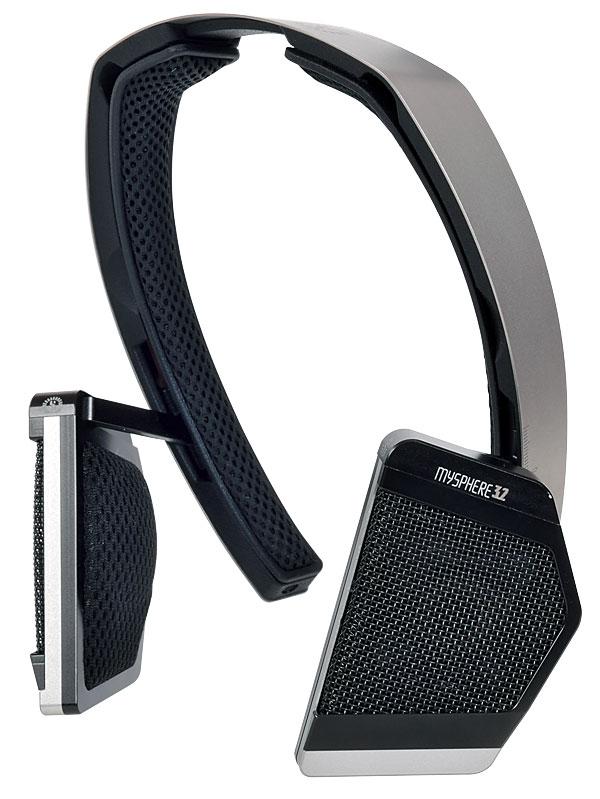
 Genuinely novel headphones are few and far between but here, from a small brand in Vienna, is one worthy of the description. And it can boast a famous ancestor...
Genuinely novel headphones are few and far between but here, from a small brand in Vienna, is one worthy of the description. And it can boast a famous ancestor...
Among those fortunate enough to have experienced it, the AKG K1000 is often spoken of with a mixture of reverence and awe. It wasn't just AKG's flagship when introduced 30 years ago, it was an attempt to redefine headphone design and shove it in a new direction. The K1000 had no earpads as such – its capsules were held away from the head by small pads above the ears – and it was pared-down structurally to obviate other resonant cavities and minimise the reflective surface area.
So it was open-back, of course, with its square drive units – which had a radial magnet structure to maximise venting – contained within woven cages of thin metal wire. And those cages could be rotated to be either flat to the ear or angled forwards, providing a listening experience more like the Stax Sigma [HFN Nov '13] but without its boxy capsules.
Dead End?
Still, the K1000 proved to be a dead-end for AKG. It spawned no cheaper AKG spin-offs, and no imitators elsewhere at the time. It was one of history's many brave attempts to shake up the status quo that earned itself lasting kudos among the cognoscenti, but didn't change the world after all. Which is not to say that there is no remnant of it today – because here it is.
The Mysphere 3.2 – priced at €3300 before VAT and customs – is more than a homage to the K1000: it's a modern, improved realisation of it created by its AKG co-designers, Heinz Renner and Helmut Ryback. And even three decades on from the K1000, its 'Hover Ear' design seems no less radical. To be accurate, there are actually two versions of the Mysphere that are identical but for their impedance. The 3.1, nominal impedance 15ohm, is better suited to use with mobile devices while this version, the 3.2, with a nominal impedance of 110ohm, has lower voltage sensitivity and is better suited to use with domestic hi-fi systems.
So, all the key K1000 features are retained here, but the look is less quirky, the design more modern and both the fit and finish excellent. The most obvious change is to the headband, which in the K1000 was a pretty ugly affair comprising a scalp strap above which two red steel hoops applied clamping force. In the Mysphere 3.1/3.2 this is a structure that wraps tightly around the head at an angle (the instruction manual describes it as diagonal, which is how it appears from the side), with sliding bearings, and rulings on the headband, to provide repeatable adjustment for different sizes of bonce, over a range of 30mm per capsule. The headband's multilayer metal/plastic construction is claimed to suppress structural resonances within it. Articulation of the capsules, from flat to the ear to fully outward, isn't specified but I measured it at 36°.
Neatly, the two soft pads on the inner surface of the headband attach by magnets, for easy removal, and are washable. Also removable for cleaning, and held in place by magnets, is the domed 'soundframe pad' which covers the driver on the inner face of the capsule.
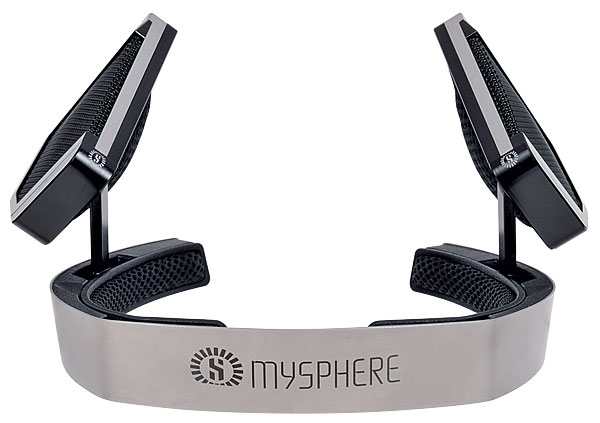
Heart Of Gold
Removing this reveals the CNC-machined aluminium frame to which the driver is attached behind a protective cloth, which may also provide some acoustic resistance. Electrical connection is via adjustable-angle 3.5mm TRRS mini-jack sockets at each end of the headband.
The absence of earpads means that with the 3.2 your ears never get sweaty, and at 347g (headset only) it is relative lightweight, particularly compared to today's bulkier planar magnetics. But is that unusual headband comfortable? I found its pressure on the skull behind the ears somewhat uncomfortable on longer listening sessions, so every potential 3.2 owner should try the design for themselves.
Because the TRRS sockets allow a four-wire connection there is no shared earth impedance for the two capsules, so electrical crosstalk is eliminated and both unbalanced and balanced connection is possible. Four cable options were provided with the headphones: 3.5m-long unbalanced, terminated in a TRS mini-jack with 6.3mm sleeve adapter (€150); 3.5m-long balanced, terminated in a 4-pin male XLR (€170); 3.5m-long balanced, terminated in a 4.4mm Pentaconn plug (€170); and 1.2m-long balanced/unbalanced, which is terminated in a 2.5mm TRRS mini-jack (€130). All the connector pins are gold-plated. The cable is thin and – certainly with the two 3.5m-long options I used – kinks too easily.
Inside each low-obstruction capsule is a 40mm square drive unit with a radial magnet structure, just as in the K1000, comprising a ring of 20 small gold-plated magnets. The gold-plating isn't bling (you can barely see it!) – it's there to protect the neodymium magnets as NeFeB is prone to corrosion. LB-acoustics doesn't say much about the driver construction save that 'Multilayer technology membranes feature internal damping with glass, air and resin reinforcement, which realises resonance-free high frequency performance far into the ultrasonic range'. While this doesn't quite square with our measurements, which show a prominent mode at just over 2kHz, it is certainly the case that the 3.2 is otherwise free of major resonance, which is in marked contrast to some planar magnetics, for example.
![]() Mind The Gap
Mind The Gap
For the listening I used my resident Teac HA-501 [HFN Apr '14] and Matrix M-Stage HPA-3B headphone amplifiers fed analogue signals from a Chord Electronics Qutest DAC [HFN Nov '18]. Now, it's important to point out from the start that the 3.2 doesn't have one 'sound', but a variety according to how you angle the capsules relative to your ear.
